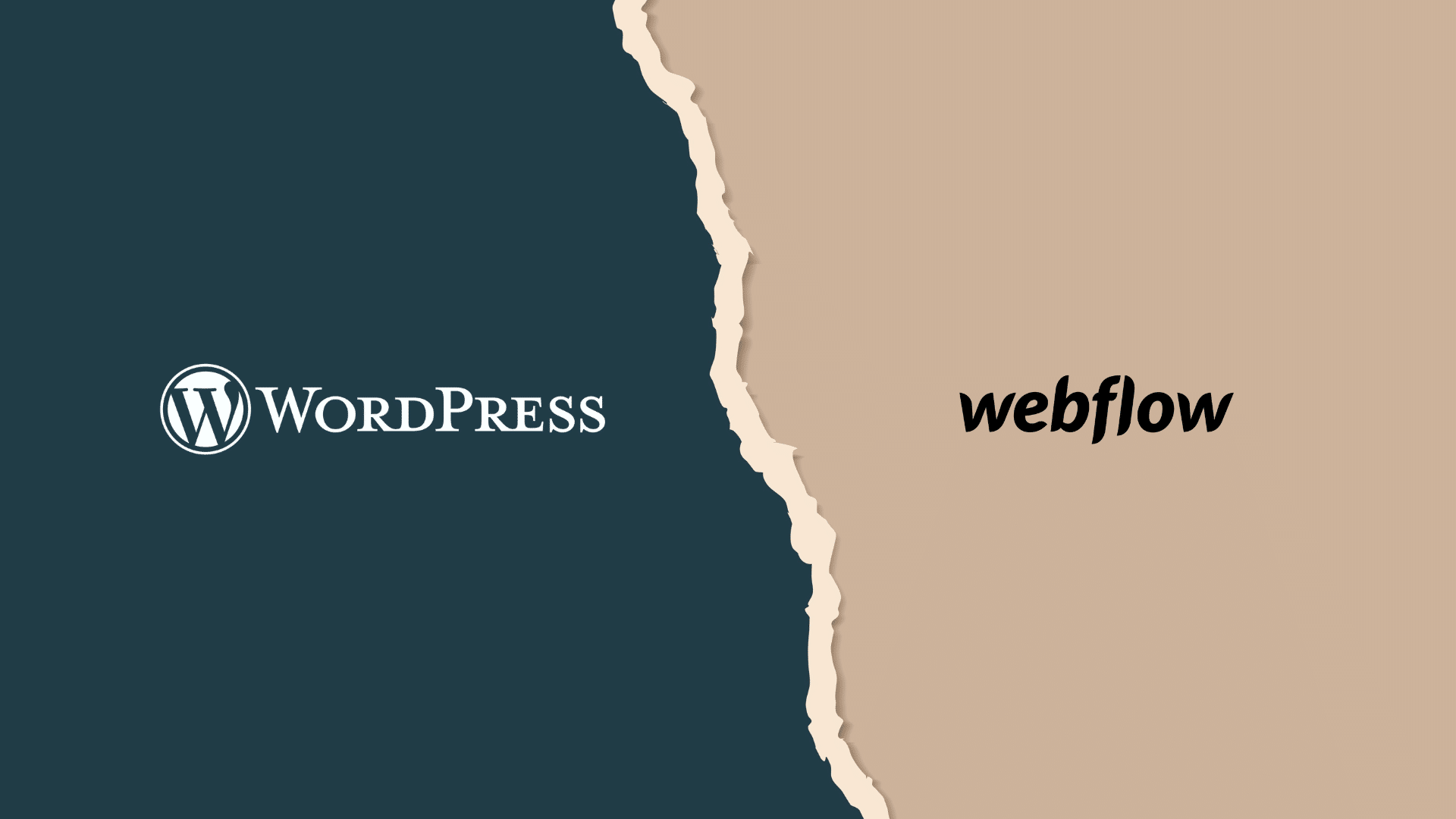
WordPress vs Webflow: Battle of the CMS
When it comes to building a website, there are many different options available, including WordPress and Webflow. Whether you are a beginner looking to create a simple personal blog or an experienced web developer looking to build a complex website, this article will provide you with the information you need to make an informed decision about which platform is right for you.
Meet the contenders
WordPress is one of the most popular and widely-used open-source content management systems (CMS) for creating and managing websites. It is well-suited for creating and managing blogs, e-commerce sites, and other types of websites that require frequent updates and a wide range of features and plugins.


On the other hand, Webflow is a cloud-based website builder and hosting platform that allows users to create custom websites without writing any code. It might sound good at first glance, but it is not without its cons. Despite being relatively easier to use and create pages with, Webflow developers are somewhat constrained to static websites with limited options, especially when taking into consideration what one can build with platforms such as WordPress.
This is a significant factor to consider when taking into account that most modern websites require integration rather than just being brochure sites, which is where developers may encounter certain limitations with Webflow.
While both site builders have their own unique features, we’ll start with getting what they have in common out of the way.
Some similarities of WordPress and Webflow include:
- Preset templates
- Visual drag & drop builder
- Content management
- Blogging features
- Security features
When looking deeper at the two, one can observe a number of key differences that offer unique competitive advantages.
What are the real differences?

Ease of use – Both WordPress and Webflow offer a visual drag & drop interface. Although one can use Webflow without prior knowledge of coding, WordPress offers more flexibility and excels in terms of content and integrations. There are also plenty of online tutorials & resources which one can access to understand better how it works.
Design & customization capabilities – When using Webflow, one can make use of features such as custom animations and interactions. This is also possible with WordPress, which offers over 9000 preset themes and templates, plus thousands more of premium templates you can buy. Even though certain specific design requirements may require coding knowledge or plugins with WordPress, the platform offers more customization options than its rival, including almost 60,000 free plugins.
Content Management System (CMS) – Even though Webflow offers a CMS for dynamic content, it’s nowhere near as powerful or flexible as WordPress. While Webflow is suitable for smaller websites, landing pages & portfolios, WordPress offers a wider range of content types, including pages, posts, and custom post types. Used for over 65% of all CMS websites, WordPress remains the most popular CMS worldwide, used by individuals, small businesses, and large enterprises alike.
eCommerce – For a robust ecommerce platform that integrates with a point of sale system, WordPress is considered to be a better choice than Webflow. WordPress has a large library of eCommerce plugins, including WooCommerce, which is a popular plugin for building and managing online stores. WooCommerce integrates with many different point of sale systems, making it easy to manage your online and offline sales from a single platform.
In contrast, Webflow is primarily a visual website builder, whereby its eCommerce plugin library is not near as extensive as that of WordPress. In fact, it has limited customization options for the checkout process and may not be suitable for larger, more complex eCommerce stores.
SEO – Once again, WordPress takes this round as it offers a wide range of SEO plugins such as Yoast and RankMath to help improve your search engine rankings, while Webflow offers basic SEO options, which would require third-party tools for more in-depth optimization.
Pricing – WordPress is free to use but you will need to pay for hosting and premium plugins & premium themes. While Webflow offers a range of pricing options, including a free plan, it can be more expensive than WordPress in the long run.
So which CMS is right for you?
Before making a decision, you should have a look at the below key statistics:
- Around 810 million websites use WordPress as of 2023 (Colorlib, 2023)
- Currently, Webflow is used by 544,053 websites (Pop Up Smart, 2023)
- WordPress has been the fastest growing content management system for 12 years in a row. (W3Techs, 2022)
- Webflow’s user base is increased by 67% in the last year (Pop Up Smart, 2023)
- Over 52% of CMS powered websites in Malta are built on WordPress, as opposed to 0.47% with Webflow (Built With, 2023)
- WordPress is used by 65.2% of all websites worldwide using a content management system. (W3Techs, 2022)
- WooCommerce is the leading eCommerce platform with 23.43% of the market share worldwide (WPSwings, 2022)
- WooCommerce facilitated over $20 Billion of sales in 2020 (WPSwings, 2022)


It’s always important to consider your specific needs, available resources and the skillset of your website development team. You may also want to consider consulting with a developer or digital specialist for guidance on which platform is best for your company.
With over 15 years of experience and over 500 websites built, we have often found that WordPress is a more reliable and dynamic CMS platform. Moreover, our recent WooExperts certification provides assurance of our technical expertise in WooCommerce, as an officially recognized and trusted agency.
Article Written by
secteam
Similar articles you might be interested in

Planning a Website Upgrade
Websites get old faster than a New York minute. Everything ages faster on the internetAnd as the pace of tech speeds up, websites are ageing even quicker. Looks don’t forgive either, as popular culture goes through swift changes, trends shift,...

Giving schools the tools they need with seamless CRM solutions
A CRM designed specifically for schools offers many benefits, such as bringing together all communication channels—from inquiries from prospective students to connections with alumni—helping institutions keep a complete picture of the entire student experience. Important Advantages of CRM for Schools:...

Harnessing Annual Recurring Revenue: Strategies for Sustainable SaaS Growth
In 2010, Girish Mathrubootham and Shan Krishnasamy started Freshdesk (now known as Freshworks) in Chennai, India. In 2018, the company exceeded $100 million in Annual Recurring Revenue (ARR), a significant achievement driven by strategic customer acquisition, innovative product development, and...
